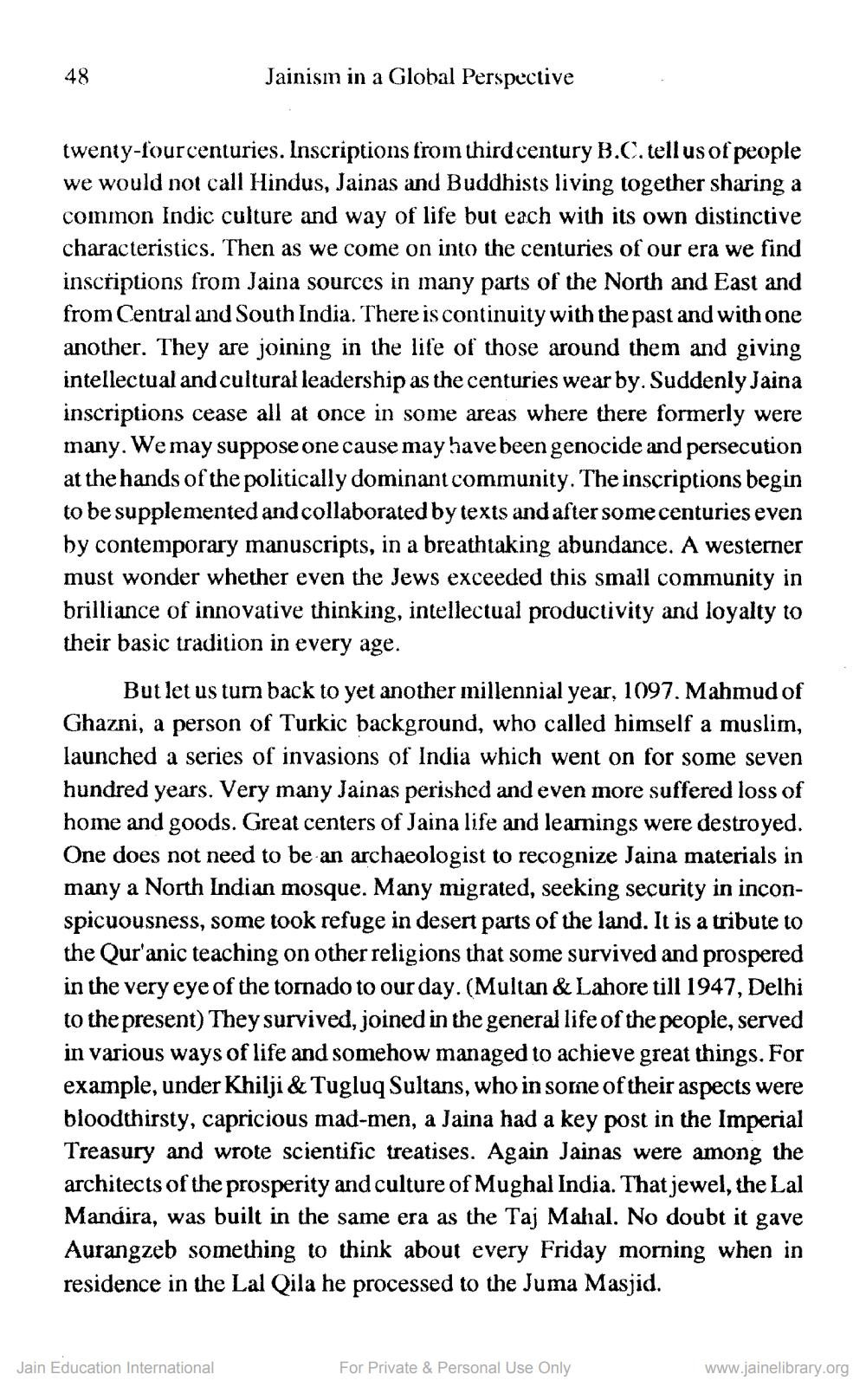________________
48
Jainism in a Global Perspective
twenty-fourcenturies. Inscriptions from third century B.C.tellus of people we would not call Hindus, Jainas and Buddhists living together sharing a common Indic culture and way of life but each with its own distinctive characteristics. Then as we come on into the centuries of our era we find inscriptions from Jaina sources in many parts of the North and East and from Central and South India. There is continuity with the past and with one another. They are joining in the life of those around them and giving intellectual and cultural leadership as the centuries wear by. Suddenly Jaina inscriptions cease all at once in some areas where there formerly were many. We may suppose one cause may have been genocide and persecution at the hands of the politically dominant community. The inscriptions begin to be supplemented and collaborated by texts and after some centuries even by contemporary manuscripts, in a breathtaking abundance. A westerner must wonder whether even the Jews exceeded this small community in brilliance of innovative thinking, intellectual productivity and loyalty to their basic tradition in every age.
But let us turn back to yet another millennial year, 1097. Mahmud of Ghazni, a person of Turkic background, who called himself a muslim, launched a series of invasions of India which went on for some seven hundred years. Very many Jainas perished and even more suffered loss of home and goods. Great centers of Jaina life and learnings were destroyed. One does not need to be an archaeologist to recognize Jaina materials in many a North Indian mosque. Many migrated, seeking security in inconspicuousness, some took refuge in desert parts of the land. It is a tribute to the Qur'anic teaching on other religions that some survived and prospered in the very eye of the tornado to our day. (Multan & Lahore till 1947, Delhi to the present) They survived, joined in the general life of the people, served in various ways of life and somehow managed to achieve great things. For example, under Khilji & Tugluq Sultans, who in some of their aspects were bloodthirsty, capricious mad-men, a Jaina had a key post in the Imperial Treasury and wrote scientific treatises. Again Jainas were among the architects of the prosperity and culture of Mughal India. That jewel, the Lal Mandira, was built in the same era as the Taj Mahal. No doubt it gave Aurangzeb something to think about every Friday morning when in residence in the Lal Qila he processed to the Juma Masjid.
Jain Education International
For Private & Personal Use Only
www.jainelibrary.org




